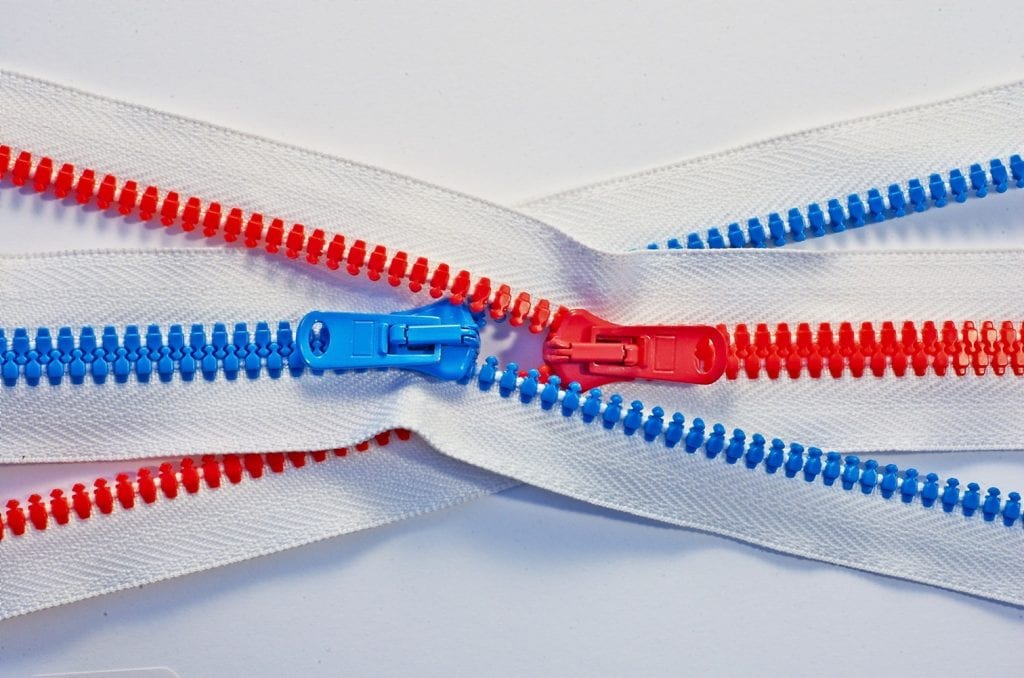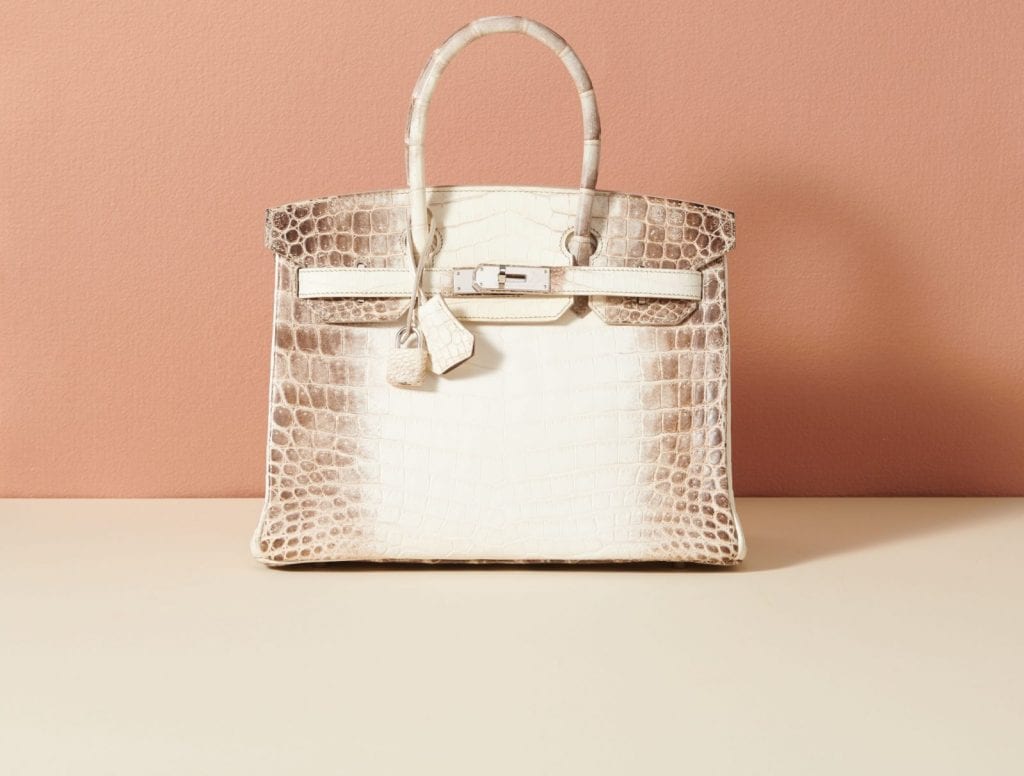Combine two rows of fine teeth that lock together, a slider and a tab. All of a sudden you have a quick way of securely closing a bag, jacket or pair of pants – a zipper. These handy, everyday devices were invented in the United States more than a century ago, and now make up a global industry worth billions of dollars. By 2024, the global market for zippers is projected to reach $19.8 billion, and one company will bring in the majority of the money, YKK, the Japanese firm that currently holds the title of the world’s top zipper manufacturer.
With $10 billion in annual revenues and a whopping 40 percent share of the global zipper market, Nihonbashi, Tokyo-based YKK sits in a mighty position on the totem pole. The international success of the Japanese company – which first got its start marketing fastening products in 1934 – lies not in its invention of the zipper; after all, it did not invent the little device. Moreover, it was not YKK’s practice of exporting zippers en masse from Japan to meet the world’s zipper needs that catapulted it to success.
Instead, YKK’s rise from small Japanese firm to global giant stems from its practice of investing abroad to establish a vast network of factories, capable of quickly turning out tons of high-quality zippers for businesses around the world. As of this year, YKK’s footprint can be found in 73 different countries by way of about 100 wholly-owned subsidiaries.
One of those countries? The United States, where in 1960, YKK first touched down with an office in New York City.
The Advent of the Zipper
If anywhere in the world ever enjoyed a comparative advantage with respect to zippers it was the U.S. That is where, after all, the now utterly-commonplace invention first got its start. In the early 1890’s, a Chicago-based inventor named Whitcomb L. Judson, dreamt up the idea.
Working at the time as a mechanical engineer for Earle Manufacturing Company, a maker of streetcars, Mr. Judson deduced that there simply had to be a better, more efficient way to secure his high-button boots. His solution? “A complicated hook-and-eye fastener that featured a ‘guide’ to clasp a sequence of hooks and eyes to close and reopen a clothing item,” as the Chicago Tribune’s James Janega described it several years ago. “It took him two years to convince the U.S. Patent Office” that his “clasp locker” was novel enough to warrant patent protection. Shortly thereafter, patent in hand, Judson unveiled his invention at the World’s Fair, and the zipper was born.
Twenty-five years passed between 1893, when Judson’s patent was filed, and its first actual use on boots, and even more time passed between then and when the zipper would find its way into the closets of a truly expansive number of consumers. That happened thanks to blue jeans. Looking for a way to interest East Coast women, who were suspected of having doubts about the rather visible button fly, a San Francisco-based denim brand called Levi’s introduced its first style with a zipper in 1947.
Around that time, the incumbent American zipper manufacturer, Talon, was enjoying a comfortably dominant position in its home market. Flourishing well through the 1960’s, it was the Talon name that could be found on seven out of every ten zipper tabs.
However, within a decade, the formerly unrivaled company would lose half of its market share. It was a classic case of a monopoly coming unstuck after resting too long on its laurels. Talon did not do enough to improve its productivity, so its prices were too high; it failed to innovate, consequently neglecting new applications such as handbags, luggage or outdoor gear; averse to risk, it exported little, despite the fact that textile manufacturing was fast relocating.
It would not take long before Talon’s market share would fall to 35 percent and a Japanese company called YKK would be there to fill in the gap. Not only were YKK’s zippers cheaper than Talon’s thanks to its proprietary manufacturing machinery, the quality of its zippers was comparable, if not better. 12 years after YKK opened its first office in New York, its first American production unit followed and with it, its budding reputation as a fast-paced, reliable manufacturer.
The real blow to U.S. industry had come a few years prior, though, in July 1969. When Neil Armstrong and Buzz Aldrin stepped onto the moon, the first humans to ever do so, the brass zippers on their highly-technical, pressurized suits were engraved with 3 little letters: YKK. With it, YKK had surely sealed its fate as the future of the market.
YKK vs. SBS
Apollo 11 aside, the zipper business gradually evolved from one dominated by individual, national champions, each initially entrenched on their home ground then challenged by imports from the most enterprising of their foreign rivals. Instead, it became a market in which a dominant multinational held court, consistently prevailing against a fringe of a several hundred, mainly Chinese companies. Separately, these much-smaller native Chinese companies were no match for the dominant force that is YKK.
Yet, in recent years, the landscape has begin to shift again, namely thanks to the consolidation of the zipper industry in China. There are now a dozen or so firms, all with three-letter names, all mightier – and more audacious – following a strong of mergers. Some, such as YCC or YQQ, make no secret about trying to closely mimic their big Japanese rival.
The most noteworthy of the pack is SBS. Listed on the Shenzen stock exchange and holding the title of China’s biggest zipper manufacturer, the 35-year old company stands out for its size and its ambition. It leads the pack in terms of the number of patents it has filed, its overall output and the volume of (about 25 percent) it exports.
Like its fellow zipper manufacturers, SBS makes no bones about its mission to beat YKK at its own game.
It is against this background that a global battle is taking shape, and the intensity of competition between the two key players is striking. Japanese YKK and Chinese SBS eagerly dispute each other’s position in various market segments. All the while, SBS is shifting up-market with better-quality metal or even plastic zippers, amassing a list of customers, such as adidas or the French sports retailer Decathlon, which will not accept zippers that jam after only 1,000 cycles.
But it will take SBS a long time to outdo YKK’s comparative advantages. In addition to the benefits that come with operating close to its customers thanks to subsidiaries all over the world, the Japanese firm wields considerable technological clout, due to its R&D centers, machine and engineering group, and production plants.
At the same time YKK, which holds a 40 percent share of the global market by value but only 20 percent by volume, has decided to move out of its comfort zone – in the middle and upper echelons of the market – and dispute its rival’s supremacy over the budget end of the market.
No one knows how this contest will pan out. The most likely outcome would be a duopoly, if only because the big firms using large volumes of zippers do not want to have to come to terms with a single supplier.
But at a time of open trade warfare and exacerbated economic nationalism, it would be a mistake to rule anything out. Not even a tweet announcing dissuasive tariffs on the import of Chinese zippers to the United States on some highly strategic pretext, nor yet the expulsion of YKK from Chinese markets on the grounds of domestic security, industrial espionage or infringing SBS patents, particularly if the zipper one day becomes a connected object capable of gathering data on a wearer’s movements.
As such, we are left to watch a bi-lateral battle of a different kind: a war over zippers.
*François Lévêque is a professeur d’économie at Mines ParisTech. [Edits courtesy of TFL]














